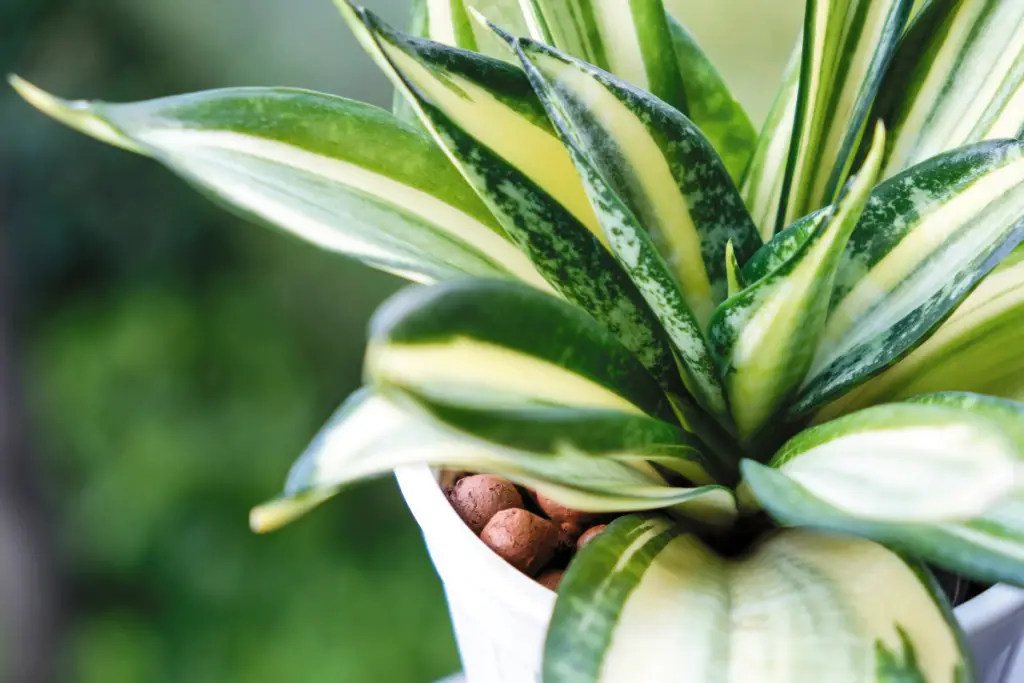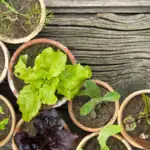Snake plants are a popular houseplant choice due to their low maintenance and air-purifying qualities.
They are also known for their striking appearance, with long, upright leaves that can reach up to several feet in height.
However, many snake plant owners are surprised when their plant suddenly produces flowers.
So, what does it mean when a snake plant flowers?
Snake plant flowers are not a common occurrence, and when they do appear, they can be a pleasant surprise.
The flowers are typically small and delicate, and they may appear in shades of white, cream, yellow, or greenish-white, depending on the variety of snake plant.
However, some snake plant owners may wonder if the flowers are a sign of a problem, or if they indicate that the plant is unhealthy.

Table of Contents
Understanding Snake Plant
Snake plants, also known as Sansevieria or Mother-in-Law’s Tongue, are popular houseplants known for their durability and low maintenance requirements.
These plants are native to tropical regions of Africa and Asia and are commonly grown indoors due to their ability to thrive in low light and tolerate neglect.
Snake plants are characterized by their long, upright leaves that grow from a rhizome, which is a horizontal stem that grows underground.
The leaves can vary in color and pattern, depending on the variety of the plant. Some common varieties include the Sansevieria trifasciata, Sansevieria cylindrica, and Sansevieria moonshine.
One of the unique features of snake plants is their ability to produce flowers, although this is not a common occurrence.
When a snake plant does produce flowers, they are small and tubular, forming in clusters. The flowers have delicate, thin petals that spray outwards and somewhat resemble honeysuckle blooms.
Depending on the snake plant variety, flowers can appear in white, cream, yellow or a greenish-white hue.
Overall, snake plants are easy to care for and make great additions to any indoor space. They are known for their air-purifying properties, making them a popular choice for bedrooms, living rooms, and offices.
With proper care, a snake plant can live for many years, bringing beauty and greenery to any space.
The Significance of Flowering in Snake Plants
Snake plants are known for their hardiness and ability to thrive in a variety of conditions. However, it is not common to see a snake plant flowering.
When a snake plant blooms, it is a rare and unique occurrence that can be both surprising and exciting for plant owners.
The appearance of flowers on a snake plant signifies that the plant is under stress. This stress can be caused by a variety of factors, such as a change in environment or a lack of nutrients.
When a snake plant feels that it is in danger of dying, it will produce flowers as a last-ditch effort to continue its legacy by producing seeds for future generations.
It is important to note that while flowering in snake plants is a sign of stress, it is not necessarily a bad thing.
In fact, some plant owners may consider it a positive development as it shows that their plant is healthy enough to produce flowers.
When a snake plant blooms, it is important to take note of the conditions in which it is growing. This can help plant owners identify any stressors that may be affecting their plant and take steps to address them.
Additionally, it is important to note that once a snake plant has produced flowers, it may take some time for the plant to fully recover and return to its normal growth pattern.
In conclusion, while flowering in snake plants may be a sign of stress, it is not necessarily a bad thing.
It is a unique and exciting occurrence that can provide valuable insight into the health of the plant and its growing conditions.
By understanding the significance of flowering in snake plants, plant owners can take steps to ensure that their plants remain healthy and continue to thrive.
Conditions for Snake Plant Flowering
Snake plants are known for their striking foliage and easy-to-care-for nature. However, not all snake plants flower, and those that do require specific conditions to do so.
In this section, we will discuss the lighting, watering, and soil conditions necessary for snake plants to bloom.
Lighting Conditions
Snake plants are native to West Africa and thrive in bright, indirect light. While they can tolerate low light conditions, they will not flower without adequate light.
Placing the plant near a sunny window that receives indirect light for most of the day is ideal. However, direct sunlight can scorch the leaves and cause damage to the plant.
Watering Conditions
Snake plants are succulents and are adapted to survive in arid conditions. Overwatering can lead to root rot and other issues that can prevent the plant from flowering.
It is best to allow the soil to dry out completely between waterings. When watering, it is important to water deeply, ensuring that the water reaches the roots.
Soil Conditions
Well-draining soil is essential for snake plants to thrive. The plant’s roots can rot if the soil is too heavy or retains too much moisture.
A mix of potting soil, sand, and perlite can provide the ideal growing medium for snake plants.
It is also important to ensure that the pot has drainage holes to allow excess water to escape.
In summary, snake plants require bright, indirect light, well-draining soil, and infrequent watering to flower.
By providing the ideal growing conditions, snake plant owners can enjoy the plant’s unique and beautiful flowers.
The Flowering Process of Snake Plant
Snake plants are known for their striking looks and easy-to-care nature. But did you know that they can also produce beautiful flowers?
The flowering process of snake plants is a rare event, and it can be an exciting experience for plant owners.
This section will cover the two main stages of the flowering process: Budding Stage and Blooming Stage.
Budding Stage
The budding stage is the first stage of the flowering process. It is characterized by the appearance of small buds on the plant.
At this stage, the buds are tightly packed together and may be difficult to see. However, as they mature, they will become more visible.
To encourage the budding stage, snake plants require the right growing conditions. These conditions include bright, indirect light, well-draining soil, and moderate watering.
If the plant is not receiving the right amount of light or water, it may not produce buds.
Blooming Stage
The blooming stage is the second and final stage of the flowering process. At this stage, the buds will begin to open up, revealing the flowers inside.
Snake plant flowers are typically white or cream-colored and have a sweet fragrance.
The blooming stage can last for several weeks, and the flowers will gradually fade and die off. After the flowers have faded, the plant will enter a period of rest.
During this time, the plant will conserve its energy and prepare for the next growing season.
It is important to note that not all snake plants will produce flowers. Some varieties are more likely to flower than others, and the conditions required for flowering may vary depending on the species.
Additionally, flowering can be a sign that the plant is stressed or in poor health.
In conclusion, the flowering process of snake plants is a rare and exciting event. By providing the right growing conditions, plant owners can encourage their snake plants to produce beautiful flowers.
Interpreting Flowering Signs in Snake Plants
Snake plants are known for their hardiness and low maintenance, making them a popular choice for indoor plants.
However, when a snake plant flowers, it can be a surprise to many plant owners. Interpreting the signs of flowering in snake plants can help you understand the health and needs of your plant.
Flowering Timeframe
Snake plants typically flower in the early summer months, although this can vary depending on the plant’s age and growing conditions.
The flowering process can take several weeks, during which the plant will produce a tall stalk with small buds that will eventually bloom into delicate white flowers.
Age of the Plant
The age of the plant can also play a role in its flowering process. Younger plants may not flower at all, while older plants that have been well cared for may produce multiple blooms in a single season.
It is important to note that flowering is not a sign of a healthy plant, but rather an indication that the plant is mature enough to reproduce.
Environmental Factors
Environmental factors such as light, temperature, and humidity can also impact the flowering process in snake plants.
These plants prefer bright, indirect light and thrive in temperatures between 60-85°F.
They are also tolerant of low humidity, making them a great choice for dry indoor environments.
Significance of Flowering
The appearance of flowers on a snake plant can be a beautiful and exciting event for plant owners.
However, it is important to note that flowering is not a guarantee of the plant’s health or vitality. In fact, some snake plants may never flower at all, and this is not necessarily a cause for concern.
Interpreting the signs of flowering in snake plants can help you understand the needs of your plant and ensure that it continues to thrive.
By providing the right growing conditions and monitoring the plant’s growth, you can help your snake plant reach its full potential.
Common Misconceptions About Snake Plant Flowering
There are several misconceptions about snake plant flowering that can lead to confusion and frustration for plant owners. Here are a few common misconceptions:
- Snake plants don’t flower. This is a common misconception. Snake plants, also known as Sansevieria, can indeed flower, although it is a rare occurrence. The flowering process is triggered by specific environmental conditions, and not all snake plants will flower.
- Flowering snake plants are unhealthy. Some people believe that a snake plant that is flowering is unhealthy or stressed. However, this is not necessarily the case. While flowering can be a sign of stress, it can also be a natural part of the plant’s life cycle.
- All snake plants flower in the same way. There are several different species of snake plants, and each may flower in a slightly different way. Some species produce tall spikes with small white flowers, while others produce shorter spikes with larger, more colorful flowers.
- Flowering snake plants require special care. While it’s true that flowering snake plants may have slightly different care requirements than non-flowering plants, they don’t require any special care. As long as you continue to provide the plant with the right amount of light, water, and nutrients, it should continue to thrive.
In summary, snake plants can indeed flower, and flowering is not necessarily a sign of an unhealthy plant.
However, it’s important to understand that not all snake plants will flower, and that different species may flower in different ways.
Additionally, flowering snake plants don’t require any special care, but may have slightly different care requirements than non-flowering plants.
Conclusion
In conclusion, snake plant flowers are a rare and beautiful sight to behold. While not all snake plants will flower, those that do are a testament to the plant owner’s care and dedication.
Snake plant flowers can be a sign of a healthy plant, but they can also indicate that the plant is getting too much light.
It’s important to monitor the amount of light your snake plant is receiving and adjust accordingly to prevent overexposure.
If you want to encourage your snake plant to flower, you can try neglecting it and letting it grow in the same pot for a long period of time.
However, this method may not work for all snake plants, and it’s important to be patient as it can take several years for a snake plant to bloom.
Overall, snake plant flowers are a unique and fascinating aspect of these hardy and low-maintenance plants.
Whether your snake plant blooms or not, it’s sure to bring a touch of greenery and natural beauty to any space.
Other Articles you may enjoy: Are Snake Plants Safe for Dogs? A Clear Answer from Pet Experts
- How to Dry Basil Leaves: A Professional Guide
- Is an Avocado a Fruit or Vegetable? Simple Answer and Explanation
- Does Pineapple Have Seeds? Exploring the Anatomy of Pineapples
- Blooming Through Winter: Can I Grow Vegetables Indoors in the Winter?
- What Can You Grow in a Greenhouse All Year Round: A Guide to Year-Round Greenhouse Gardening
- Are Blueberries Blue? Debunking the Myth of Their Color
















